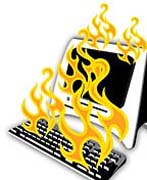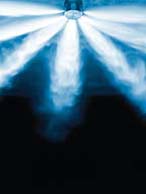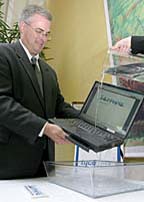
As sprinkler systems, standpipes, and fire extinguishers became more prevalent in providing fire safety improvements in the 20th century, a vast, new, uncharted territory posing unique fire protection requirements emerged a few short decades ago. The world was discovering computers and our reliance on them expanded at a startling pace until just about every business and home became wholly dependent on the continuous operation of these machines.

Electronic Fire Safety Challenges
As the electronic revolution swept across North America, it quickly became apparent that the reliance on computers was so critical that the loss of even one machine could be crippling to a business. It also became an obvious fire safety challenge that computers would need to be protected in the event of a fire.But who can predict a fire? In addition to that query, how could a computer be protected from the very element (water) that was utilized to extinguish a fire? It was a new and topical debate, and one that did not result in an immediate, definitive answer. When the solution did emerge, the term "clean agent"

Some Things You Just Can't Predict
All was well in the clean agent sector (or so it seemed), until it all came crashing down with a thud in 1986. At that time, the United States Environmental Protection Agency (EPA) identified halon as being a contributor to the depletion of the ozone layer. Suddenly, the focus moved dramatically from protecting special hazards to protecting our atmosphere for future generations.It was the shock that came out of nowhere. The verdict on halon was swift and uncompromising. Phase-outs were initiated beginning in 1987 and by 1993, halon could no longer be manufactured. It should be noted that existing halon systems may continue to be operated in the United States (and recycled halon is still available for recharge). In Europe, as of December 31, 2003, all halon systems were required to be removed from service.
With the demise of halon, the search for suitable halon "alternatives"
Looks Can Be Deceiving
After almost a decade without any significant new alternative clean agents, 3M announced a partnership with Tyco Fire & Security in 2003 to launch a unique fire suppression system. The engineers at Ansul, Inc. (part of Tyco) developed the SAPPHIRE total flooding system that was powered by the 3M™ NOVEC™ 1230 Fire Protection Fluid. NOVEC 1230 fluid (C6-fluoroketone) is actually a chemical that looks similar to water. Although, in this case, looks can be deceiving since NOVEC 1230 dries 50 times faster than water. It is stored as a fluid in containers much like other clean agents. However, upon discharge (and pressurized by nitrogen at 360 psi), the agent becomes a gas and works as a total flooding agent.By using sophisticated detection devices, the SAPPHIRE system will actually sense changes in a room that could eventually result in a fire hazard. Upon sensing these elements, the system will provide warnings and then discharge in just 10 seconds, thereby putting out the "fire"